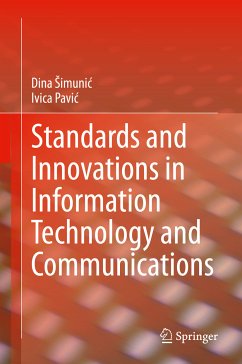
Cognitive Radio Policy and Regulation (eBook, PDF)
Techno-Economic Studies to Facilitate Dynamic Spectrum Access
Redaktion: Medeisis, Arturas; Holland, Oliver
Versandkostenfrei!
Sofort per Download lieferbar
112,95 €
inkl. MwSt.
Weitere Ausgaben:

PAYBACK Punkte
56 °P sammeln!
This book offers a timely reflection on how the proliferation of advanced wireless communications technologies, particularly cognitive radio (CR) can be enabled by thoroughly-considered policy and appropriate regulation. It looks at the prospects of CR from the divergent standpoints of technological development and economic market reality. The book provides a broad survey of various techno-economic and policy aspects of CR development and provides the reader with an understanding of the complexities involved as well as a toolbox of possible solutions to enable the evolutionary leap towards suc...
This book offers a timely reflection on how the proliferation of advanced wireless communications technologies, particularly cognitive radio (CR) can be enabled by thoroughly-considered policy and appropriate regulation. It looks at the prospects of CR from the divergent standpoints of technological development and economic market reality. The book provides a broad survey of various techno-economic and policy aspects of CR development and provides the reader with an understanding of the complexities involved as well as a toolbox of possible solutions to enable the evolutionary leap towards successful implementation of disruptive CR technology or indeed any other novel wireless technologies. Cognitive Radio Policy and Regulation showcases the original ideas and concepts introduced into the field of CR and dynamic spectrum access policy over nearly four years of work within COST Action IC0905 TERRA, a think-tank with participants from more than 20 countries. The book's subject matter includes: . deployment scenarios for CR; . technical approaches for improved spectrum sharing; . economic aspects of CR policy and regulation; . impact assessment of cognitive and software-defined radio; and . novel approaches to spectrum policy and regulation for the age of CR. The book will interest researchers in the field of wireless communications, especially those working with standardization and policy issues, as well as industry and regulatory professionals concerned with radio spectrum management and the general development of wireless communications. Considerable complementary reference material such as power point slides and technical reports that illustrates and expands on the contents of the book is provided on the companion website to the book, found athttp://www.cost-terra.org/CR-policy-book
Dieser Download kann aus rechtlichen Gründen nur mit Rechnungsadresse in A, B, BG, CY, CZ, D, DK, EW, E, FIN, F, GR, HR, H, IRL, I, LT, L, LR, M, NL, PL, P, R, S, SLO, SK ausgeliefert werden.













